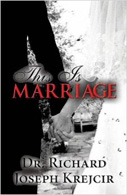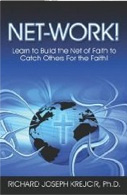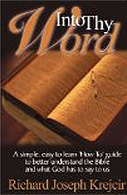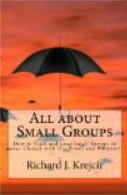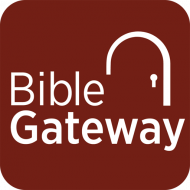Ezra opened the book. All the people could see him because he was standing above them; and as he opened it, the people all stood up. Ezra praised the Lord, the great God; and all the people lifted their hands and responded, "Amen! Amen!" Then they bowed down and worshiped the Lord with their faces to the ground. Nehemiah 8:5-6
Here is a list to show you the various most popular translations:
Remember the Bible was written in Hebrew for most of the Old Testament and in Greek for the New Testament. There are always many ways to translate a different language.
The Main Bible Translations:
KJV: The Kings James (1604-1611). A "word for word," that is over 400 years old and uses older Greek and Hebrew manuscripts (since there has been a multitude of new discoveries with manuscripts and word studies). Also, the language is archaic, and means and reads different than what we are used to, so unless you are an English "Lit" major working on your Ph.D., or grew up with it, then read it for its beauty and not for study. You can observe this yourself by watching old TV shows from the 50's and listen to how they used language and compare it to now. Big difference, hence why kids today laugh at those shows differently than the original intention was. If a translation from the 50's would be hard to understand, what of 400 years past? Yet, it is this author's favorite to feel God's Majesty. We highly recommend this one to worship with.
ESV: English Standard Version (2001). Almost "word for word," is an update to the NASB, New American Standard Bible, carefully assessed against the original Hebrew, Aramaic, and Greek, to ensure the fullest "essentially literal" accuracy and clarity of the original text. This has the best scholarship behind it and is perhaps the best Bible for study or to preach from and as a pew Bible.
NIV: New International Version (1973). A very readable Bible, it is a cross between a "word for word" translation and a "Dynamic Translation" which brings additional words into the text to make the point of the original language. This is often necessary because when you translate any language, you cannot always do it word-for-word and convey the original thought of the speaker or author. This version has some of the finest American scholarships. Make this Bible your best friend! We highly recommend this one to study, for devotions, and as a pew Bible.
NKJV: The New King James Version (1982). A modernization to the classic King James. This is an excellent translation and very readable with a flare to the KJV. We highly recommend this one to study and worship with!
NASB: New American Standard Bible (1960). A "word for word," an excellent translation for serious study word for word translation, which translates each word from the original language into the best corresponding English equivalent. However, it is wooden and hard to read. It is a favorite among conservative evangelicals. We highly recommend this one to study with or to preach from.
RSV: Revised Standard Version (1952). The standard pew Bible until the NIV. Good translation, but word usage will be hard to understand and is dated (i.e. 50's TV show). Words lose and gain different meanings from generation to generation. This translation is two generations removed from us today. If this is your pew Bible, time to replace them.
NRSV: New Revised Standard Version (1991). This has very poor and very excellent scholarship; unless you can determine the difference, stay away. This version also reads into the text theological agendas that are not there, stay far away from it!
NAB: New American Bible (1970) this is the best Catholic Bible, excellent scholarship.
NLT: New Living Translation (1999), "Dynamic Translation," is an excellent cross between a translation and a paraphrase. Make this Bible your second best friend! This is the best translation for daily reading, devotions and for starting out. It is an update to the Living Bible.
JB: Jerusalem Bible (1966) is an English translation of a French translation (Bible de Jerusalem). It is not translated from the original languages! However, it is very poetic and beautiful with its use of language, but not so good of a translation. It is great for extra insights and dramatic readings.
NEB: The New English Bible (1961) great English scholarship from the folks who brought us fish and chips, thus is filled with "British Idioms," so you may not understand it well, unless you watch a lot of British TV. It is great insightful reading, especially the Psalms, but use only next to a literal translation ESV, NASB, NIV or NKJV.
LB: The Living Bible (Translated in 60's Published in 1971) A paraphrase, that adds extra words to get a better meaning and read. Great easy reading for reading the Bible like a novel, but far from the literal meaning. Use the updated version; NLT.
GNB. The Good News Bible (1966) is a paraphrase with very good scholarship, makes the Bible easy to read, excellent to get the big picture and alongside a good translation. It is good for children and devotions.
Some other good, insightful paraphrases are J.B. Philips (1947), Moffit (1900's), The Amplified Bible (1958), The Message (1993), Contemporary English Version"(1995) this is great for youth and children or teaching them, or the "New Century Version" (1987).
AND THERE ARE HUNDREDS MORE!
Here is a chart to show approximately how literal they are, Literal (word for word) / A cross somewhat literal / Dynamic (extra emphasis) / Paraphrase:
Literal somewhat literal Dynamic Paraphrase
NASB ESV NKJV NEB NLT LB
RSV NIV NRSV JB CEV Philips
KJV NAB (catholic) GNB Amplified
We need to get into His Word daily! Pick one and go at it and do not give up. Need help? See our article How to Read and Enjoy the Bible (ADD LINK)
We also have Bible reading plans that help you set a pace and keep it up. We also have a wonderful Bible Study series that takes you through the entire Bible and gives an overview of each Book, its main themes and verses, and major characters. So, as you read, you can learn a more.
God is more concerned with our obedience than our knowledge. This is so essential for us to understand and apply! What we think we know pales in comparison to who Christ is and what He does for us. When we feel we are wise, we are like a four-year-old thinking he knows better than his parents. How far can a four-year-old carry himself in life? How far can we carry ourselves in life without Christ? We may think we are doing well, but when we look back, with eternity as our guide, our ways are revealed as very pathetic indeed! We need to allow God's truth to reign in us, and we must hold on to that reign with trust and obedience. When we do this without worry, and with trust, we grow, and real wisdom will flow into us, and through us to those around us. Just be aware that God will not give you wisdom or gifts until you have mastered what He has already given you (Luke 16:10; 19:17; John 7:17; 14:12; Heb. 12:6)!
"Americans need to read the Bible. Even more, they need to study it. It is the cornerstone of freedom, the foundation of idealism, and the operandi of living." Billy Graham
© 1984, 2001, 2016, R.J. Krejcir, Ph.D., www.intothyword.org




